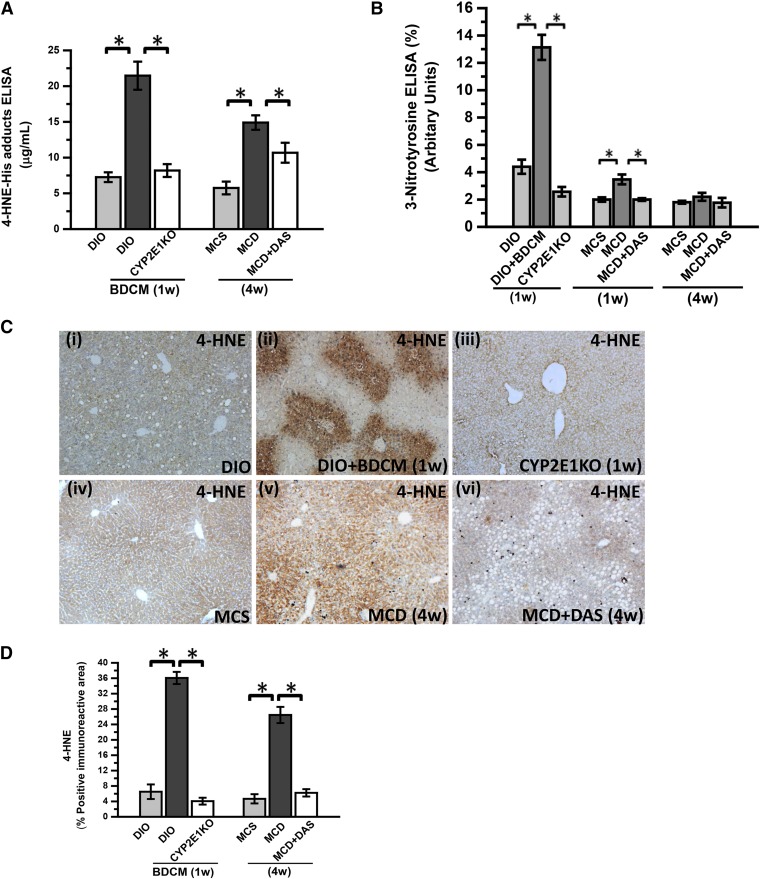Fig. 1.
BDCM exposure in DIO mice and MCD diet wild-type mice generates CYP2E1-mediated oxidative stress. (A) Quantification of 4-HNE-His adducts (stable adducts of 4-HNE) in mouse liver homogenate by indirect ELISA of DIO mice, DIO mice exposed to BDCM for 1 week (DIO + BDCM, 1 week), mice with the CYP2E1 gene deleted exposed to BDCM (CYP2E1 KO), mice fed a MCS diet, mice fed a MCD diet, and mice fed a MCD diet and treated with diallyl disulfide (CYP2E1 inhibitor) for 4 weeks (MCD + DAS). The y-axis represents the 4-HNE-His adduct in pg/ml (n = 3). *P < 0.05 is considered statistically significant. (B) Indirect ELISA of 3-nitrotyrosine in mouse liver homogenate of DIO, DIO + BDCM (1 week), CYP2E1 KO, MCS, MCD, and MCD + DAS (1 week and 4 weeks). The y-axis represents the percentage levels of 3-nitrotyrosine immunoreactivity (n = 3). *P < 0.05 is considered statistically significant. (C) Immunohistochemistry of mouse liver slices depicting 4-HNE immunoreactivity (lipid peroxidation) in DIO, DIO + BDCM (1 week), CYP2E1 KO, MCS, MCD, and MCD + DAS. Magnification: 10× (n = 3). (D) Morphometric analysis of 4-HNE immunoreactivity. The y-axis shows the percentage of the positive immunoreactive area (n = 3, analysis of images from three separate microscopic fields). *P < 0.05 is considered statistically significant.

